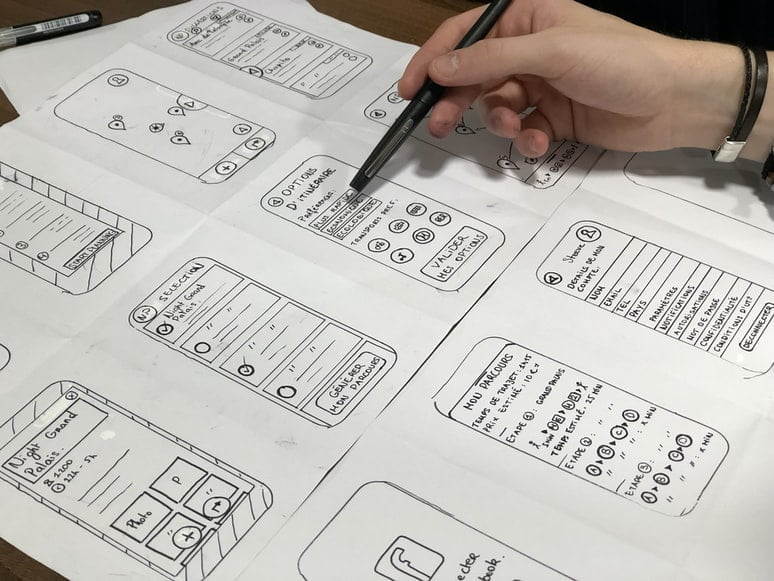The 4 Elements of Every Worthwhile UX Strategy
by Sumona Technology Published on: 14 December 2021 Last Updated on: 22 July 2022

Billions of new digital products enter the market every day to win their place in the users’ hearts and devices. But what determines whether they’ll fail or fly?
In this resource article, we speak with designers and branding experts from a leading ux agency in singapore. We request them to share some tips and insights on how businesses of all shapes and sizes should pursue UX. If you are a business owner that is looking to overhaul your company’s branding, visuals, and design, then please read what we have till the very end.
It’s probably the degree of uniqueness and a new way of solving user problems that they deliver to clients. But it’s not all – instead of simply offering a new way of doing familiar things, you need to show how things can be done better and simpler.
The secret recipe to such a unique product offer is a properly crafted, cohesive UX strategy. Here is a definitive guide to generating your own bulletproof strategy for market entry with a bang.
What Is a UX Strategy?

Let’s clarify the basic terminology first. Most experts mean a guideline for UX design efforts for your new product. In a nutshell, it’s a list of your expected outcomes, explanations of their relevance, and workable steps to achieving them.
Why Does It Matter So Much?

The need for a UX strategy for any digital product is explained by the fact that usability is the cornerstone of success. Usability denotes the ease with which a user can use your app or platform and complete the intended tasks in it. Thus, UX is a tactical aspect of new product development. The easier and more enjoyable your app is, the higher the chances are that users will stay. Especially when you work with UI/UX design agency.
When designing for usability, you need to focus on the following dimensions:
- Do users complete the tasks quickly and easily?
- Does my product offer unique value to users?
- What makes people start using my product?
- Do I deliver an enjoyable experience to customers?
- Is my product easily installable and adaptable?
With these ideas in mind, you can refine the UX strategy for a successful product launch.
Critical Elements of a Killer UX Strategy

Opinions about mandatory UX strategy components differ widely, but here we present the core consensual set that no strategist should ignore.
#1 Business Strategy
The first point to consider is how your new product fits the broader business strategy and its values, principles, and vision.
- Do you plan to achieve a competitive advantage in the market with this product?
- What place will it occupy in your revenue streams?
- Is it the only product you have, or does it add to an existing product range?
- How does it fit your strategic business objectives?
You can also use the Venn diagram to find the overlaps between business, technology, and users to guide your UX strategy. But don’t be too generic. Your primary goal at this stage is to translate business goals into measurable UX success metrics.
#2 Unique Value Proposition and Differentiation
The next point to consider is your competitive benchmarking and product differentiation on the market. It’s simple: you can’t market a new product if it’s similar to hundreds of analogs. You’ll never find the right words to persuade people to buy your product instead of a similar one to which they’re accustomed.
Thus, the basic principle behind any new product development is to do things better, smarter, simpler. Your critical competitive advantage is differentiation – the value you add to existing products and the unique combination of features that users have never experienced before.
The simplest way to complete competitive benchmarking and develop your USP is to look at competitors’ products. Look through their reviews and social media discussions. Study the 3-star and 4-star ratings to see what dissatisfies people. Incorporate the missing features, simplify the complex processes, and here you go with a product worth using.
#3 Behavioral Analytics Based on User Research
Now we come to the stage of data analysis. This phase includes several components: web analytics and user data analysis. Web analytics is crucial as it gives objective, hard data about which features work and which don’t. As a result, you get a bird’s-eye view of what users like and don’t like, becoming better positioned to make functionality choices for your new product. The best about this approach is that it takes all guesswork out of the process, leaving only facts to consider.
User research is another phase of the process that involves behavioral categorization and the development of personas and scenarios. It’s a labor-intensive and creative process, but these efforts are highly rewarding. By doing it right, you get detailed user profiles with actual use cases. This information informs UX design the best as you know what people want from your product.
#4 Interaction Modeling (UX)
This is where you add user experience requirements to the UX strategy equation. At this point, you need to model various variants of user interaction with your product.
- What steps will a basic user make upon entry?
- How can users achieve different goals?
- What will be the interaction sequence for each intended task?
All these questions need concrete answers that translate into sleek, intuitive interfaces and positive user experiences.
Once the principles of user interaction are clear, they need alignment with the planned features. Now you are better positioned to prioritize features and include only the necessary functionality in your app to avoid clutter or redundancy. To do this, you should create a user roadmap, align it with the planned features, and check their compliance with broader business goals. The resulting feature set should fit the UX strategy ideally, resulting in a product doomed to success.
Usability Rocks
Now that you have a workable UX strategy checklist to follow, it’s time to act! Don’t forget that users are your primary stakeholders. Without a user buy-in, you’ll never achieve business outcomes, wasting money and energy on something that doesn’t work. So, by conceptualizing user experience, you can get a clear idea of what your target users want. Make your product desirable and easy to use; that’s the secret sauce for a perfect new product launch.
Read Also:







































































































